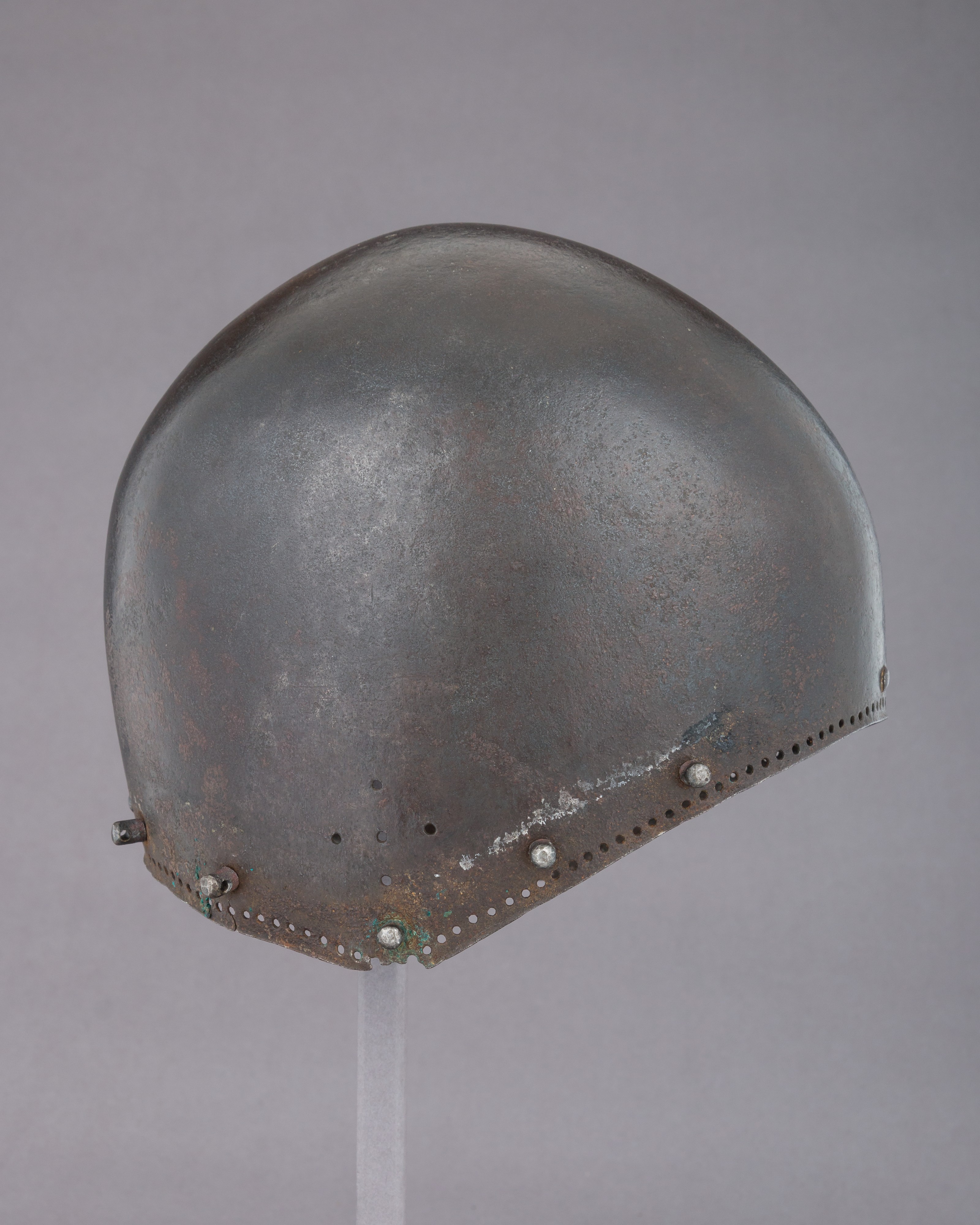Cervelliere on:
[Wikipedia]
[Google]
[Amazon]

 A cervelliere (cervelière, cervelliera; la, cervellerium, ''cerebrarium'', ''cerebrerium, cerebotarium'') is a hemispherical, close-fitting skull cap of steel or iron. It was worn as a
A cervelliere (cervelière, cervelliera; la, cervellerium, ''cerebrarium'', ''cerebrerium, cerebotarium'') is a hemispherical, close-fitting skull cap of steel or iron. It was worn as a

 A cervelliere (cervelière, cervelliera; la, cervellerium, ''cerebrarium'', ''cerebrerium, cerebotarium'') is a hemispherical, close-fitting skull cap of steel or iron. It was worn as a
A cervelliere (cervelière, cervelliera; la, cervellerium, ''cerebrarium'', ''cerebrerium, cerebotarium'') is a hemispherical, close-fitting skull cap of steel or iron. It was worn as a helmet
A helmet is a form of protective gear worn to protect the head. More specifically, a helmet complements the skull in protecting the human brain. Ceremonial or symbolic helmets (e.g., a policeman's helmet in the United Kingdom) without protect ...
during the medieval
In the history of Europe, the Middle Ages or medieval period lasted approximately from the late 5th to the late 15th centuries, similar to the post-classical period of global history. It began with the fall of the Western Roman Empire a ...
period.
History
The cervelliere was first introduced during the late 12th century. It was worn either alone or more often over or under amail
The mail or post is a system for physically transporting postcards, letters, and parcels. A postal service can be private or public, though many governments place restrictions on private systems. Since the mid-19th century, national postal sys ...
coif
A coif () is a close fitting cap worn by both men and women that covers the top, back, and sides of the head.
History
Coifs date from the 10th century, but fell out of popularity with men in the 14th century."A New Look for Women." Arts and ...
. Additionally, a great helm could be worn over a cervelliere, and by the late 13th century this was the usual practice.
Over time, the cervelliere experienced several evolutions. Many helmets became increasingly pointed and the back of the skull cap elongated to cover the neck, thus developing into the bascinet. Cerveillieres were worn throughout the medieval period and even during the Renaissance.Douglas Miller, ''Armies of the German Peasants' War 1524-26'' (Oxford: Osprey Publishing, 2003), 47. They were cheap and easy to produce and thus much used by commoners and non-professional soldiers who could not afford more advanced protection.
Anecdotally, medieval literature credits the invention of the cervellière to astrologer Michael Scot
Michael Scot ( Latin: Michael Scotus; 1175 – ) was a Scottish mathematician and scholar in the Middle Ages. He was educated at Oxford and Paris, and worked in Bologna and Toledo, where he learned Arabic. His patron was Frederick II o ...
ca. 1233, though this is not seriously entertained by most historians. The ''Chronicon Nonantulanum''Planché gives ''Nantubanum'' but ''Nonantulanum'' is given by Du Cange records that the astrologer devised the iron-plate cap shortly before his own predicted death, which he still inevitably met when a stone weighing two ounces fell on his protected head.
Notes
References
* * * * * *External links
*http://www.charlesfleming-sca.com/military/cervelliere.htm Medieval helmets {{Medieval-armour-stub pt:Capacete#Elmo